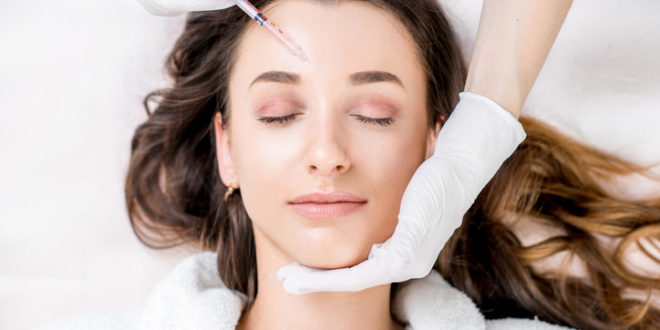 Platelet-rich plasma is the most popular treatment for hair loss globally. Platelet-rich plasma, a.k.a. PRP, is obtained from our own blood. For this, blood is collected as routine medical procedure. It is then centrifuged at specific parameters and the yellow part of the blood, rich in platelets, is separated. This yellow PRP, also known as liquid gold, has shown promising results in hair- and skin-related problems in the last decade. Although the role of PRP goes beyond just the skin and hair, we will discuss its dermatologic utility here.
Platelet-rich plasma is the most popular treatment for hair loss globally. Platelet-rich plasma, a.k.a. PRP, is obtained from our own blood. For this, blood is collected as routine medical procedure. It is then centrifuged at specific parameters and the yellow part of the blood, rich in platelets, is separated. This yellow PRP, also known as liquid gold, has shown promising results in hair- and skin-related problems in the last decade. Although the role of PRP goes beyond just the skin and hair, we will discuss its dermatologic utility here.
How does it help with hair loss?
Our hair grows in cycles. One hair cycle takes around nine months. However, growth phase might last for up to one year, giving us long, lush hair of any length we choose to grow. In baldness, growth phase of the hairs is shortened progressively in each hair cycle. Hair root stem cells also slowly lose their regeneration power. Blood supply decreases, too, allowing hair roots to eventually die. This process of balding is known as androgenetic alopecia.
Platelet rich plasma has been used in androgenetic alopecia for quite some time now. Although initial studies were inconclusive, recent systematic review in 2020 of many studies reported that PRP has consistently been shown to increase hair density, hair caliber, and hair length and texture in many researches. Almost 84% of all research published on PRP for hairs, till date, has shown beneficial effects, which is commendable for any medical therapeutic modality.
What happens when we inject PRP?
Activated platelets release VEFG, PDGF, FGF, EGF, IGF-1, and TGF-β, which promote stem cells to convert into hair follicles, prolong hair growth phase, reduce inflammation, improve blood flow slightly, and even increase thickness of the skin. Many studies have reiterated the above findings. Uebel et al. showed that pretreatment of follicular units with PRP before transplantation resulted in improved hair growth and density.
Why doesn’t PRP work in some patients?
Results depend on technique of PRP collection, machine used, volume of PRP injections, level of injection, correct diagnosis of hair fall, duration and sessions used, etc. Faulty techniques, impure preparations, incorrect injection depth, improper platelet activation, and inadequate amount of platelets in PRP are responsible for its failure. A common reason for patient dissatisfaction is improper use of PRP in conditions that do not have good clinical evidence on efficacy of PRP. Compared to the available medical therapies, it is safer, without any side effects, as it is our own blood cells. Its popularity is mainly because of its side effect-free profile and ability to improve hair fall and hair regrowth.
PRP and androgenetic alopecia
Androgenetic alopecia is the most studied hair loss that benefits with PRP. It works in both male- and female-pattern hair loss. But, since female-pattern hair loss has less defined causes compared to male baldness, results could be variable. For example, when we are unable to look for secondary causes of FPHL, and those causes go untreated, PRP alone might not work.
Does PRP work alone?
PRP is now accepted to be NOT a monotherapy. It means that, despite its benefits in hair loss, the results obtained by PRP need to be maintained with other medical treatment. Moreover, since causes of hair loss are many, other additional therapies targeting known causes, such as hormones, will help achieve better results. Recently, the role of PRP in combination with stem cells is showing promising benefits.
How does it help with skin problems?
PRP therapy is known for its wonderful regenerative capacity. It contains factors that stimulate cells to regrow and nurture. Hence, it is helpful in improving wrinkles and pigmentation, and achieving even- toned skin glow.
How long does it take to do PRP in clinic?
It takes around 30 minutes to prepare the PRP and 15 more minutes to inject it. The entire process should complete within one hour. When combined with microneedling, it might take 15 minutes more.
How many sessions of PRP gives good results?
The number of sessions is ideally between four to six sessions. Each PRP session stimulates hairs to go into growth phase. To see visible results, we need to do monthly PRP injections for four to six months at first. However, some people might need less or more sessions, depending on the grade of hair loss, how rapidly someone is balding, any other medical conditions, etc. As a maintenance treatment, three sessions every year is recommended.
Is it painful?
PRP is slightly painful. Pain of PRP is with the platelet solution itself, and not exactly due to needles. Since very small-sized needles are used, they are not painful. However, to those who have less pain tolerability, you may opt of growth factor treatment. Growth factors are modified PRP, where blood is drawn similarly, but the injections are painless. Growth factors are bit more expensive compared to PRP, but have comparable results.
How long does it take to recover from PRP injections?
Recovery time is minimal after PRP injections. Since small aliquots are injected and it is one’s own blood, there are no specific restrictions after the procedure. You can exercise or resume physical activity the same day.
When do you know you are an ideal candidate for PRP?
PRP therapy has a proven role in male and female hair loss, especially genetic balding. However, it is best to get proper evaluation first by your dermatologist. The dermatologist with expertise in trichology will take detailed history regarding the type of hair loss and its associations. Trichoscopy of the scalp gives a clearer picture regarding the diagnosis. Then, a few blood tests are important to check for any underlying cause, which might or might not respond to PRP injections. Once the diagnosis has been confirmed, the number of PRP sessions and concomitant medical treatment will be determined.
Is PRP permanent treatment?
Hair loss has many causes. Stress-related hair fall can improve with time. But, baldness is generally a continuous process similar to aging. Baldness is also considered a hair aging. Hence, treatments, including medicines and PRP, are temporary. They help in stopping the progression and improve density.
Are there any side effects?
PRP is derived from your own blood. Hence, it is the safest cosmetic procedure available. Mild pain and discomfort are the only known side effects.
 Medicosnext
Medicosnext




